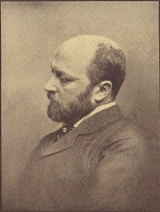
(15 April 1843 – ) was an American-born writer, regarded as one of the key figures of 19th-century literary realism
. He was the son of Henry James, Sr., a clergyman, and the brother of philosopher and psychologist William James
and diarist Alice James
.
James alternated between America and Europe for the first 20 years of his life, after which he settled in England, becoming a British subject
in 1915, one year before his death.
Everything about Florence seems to be coloured with a mild violet, like diluted wine.![]()
The face of nature and civilization in this our country is to a certain point a very sufficient literary field. But it will yield its secrets only to a really grasping imagination... To write well and worthily of American things one need even more than elsewhere to be a master.![]()
It's a complex fate, being an American, and one of the responsibilities it entails is fighting against a superstitious valuation of Europe.![]()
One might enumerate the items of high civilization, as it exists in other countries, which are absent from the texture of American life, until it should become a wonder to know what was left.![]()
Whatever question there may be of his [Thoreau's] talent, there can be none, I think, of his genius. It was a slim and crooked one; but it was eminently personal. He was imperfect, unfinished, inartistic; he was worse than provincial — he was parochial; it is only at his best that he is readable.![]()
He would agree that life is a little worth living — or worth living a little; but would remark that, unfortunately, to live little enough, we have to live a great deal.![]()
It is, I think, an indisputable fact that Americans are, as Americans, the most self-conscious people in the world, and the most addicted to the belief that the other nations of the earth are in a conspiracy to undervalue them. ![]()

